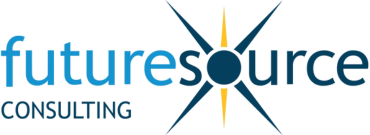BYOD shows renewed strength in education, causing vendor strategy rethink
Bring-your-own-device (BYOD) continues to gain momentum in K-12 schools across the globe, with the trend now impacting vendor strategies and the route into the education market.
The latest BYOD mobile computing study from Futuresource Consulting, carried out across the USA, UK, Australia, Germany, India and Japan, shows that a tightening of budgets in education is fuelling the trend. By tapping into BYOD, schools can accelerate one-to-one computing programs and realise the associated benefits far quicker. This was the primary reason given for deploying the scheme in the majority of schools.
Overwhelming parent support for BYOD
Among parents surveyed who made a BYOD purchase, more than four in five agreed that it was an essential move to aid their child’s education. However, despite acknowledging the need for BYOD, 40% of them felt that the purchase should be funded by the school.
Of the schools surveyed, less than one in five that didn’t already have a BYOD scheme in place was considering implementing one in the next two years. Key barriers cited were concerns around affordability for parents, as well as security issues. In addition, half of the non-BYOD schools already provided students with devices, negating any need for a monetary contribution from parents.
Australia at the forefront, USA facing barriers
“Digging into the detail, Australia leads the pack in terms of market maturity,” says Claire Kerrison, Principal Analyst, Futuresource Consulting. “In 2023, 79% of its mobile PC shipments to K-12 were part of a BYOD scheme, underlining just how integral it has been to one-to-one mobile PC deployment in the country. This trend has been driven by an established ecosystem of specialist players, offering fully managed BYOD deployment to schools.
“In India, BYOD has also been integral to digitising classrooms in private schools. However, there is a substantial digital divide in the country, as its public schools are grossly underfunded. As a result, we expect total device penetration among students attending public schools there to achieve only around 2% by 2028.
“In the USA, BYOD deployment has been impacted by a child’s right to a free education. This has led to restrictions on what schools can ask parents to fund. Furthermore, device equity in education has become a key political issue, which has helped to secure future budgets for EdTech.”
According to the survey, retailers and manufacturers are the most used channels for parents buying a device, with two thirds who made a BYOD purchase using this route. Almost all schools allow parents to purchase through a retailer or manufacturer, which affords parents more variety and better value for money, though schools are influential over retailer choice.
Of the other channels available, one in ten parents are purchasing directly through the school, while around one in six use a parent purchasing portal.
For more information on Futuresource Consulting’s new K-12 BYOD market opportunity report, or to make a purchase, please contact ben.thrussell@futuresource-hq.com.
Latest Collaboration Reports
Latest Collaboration Insights
